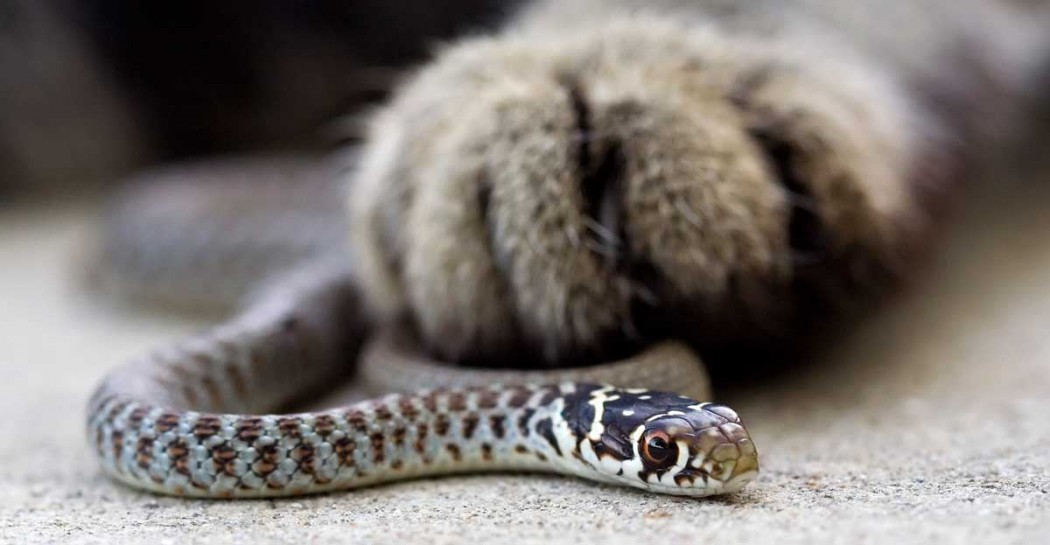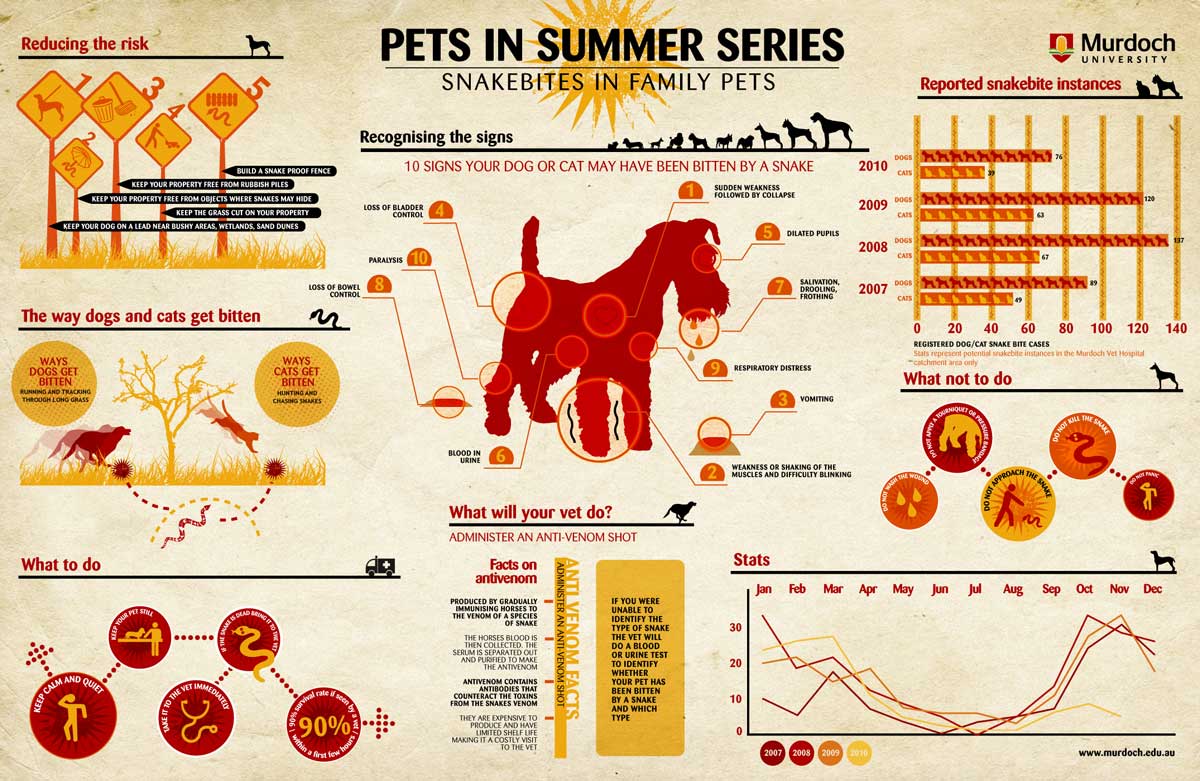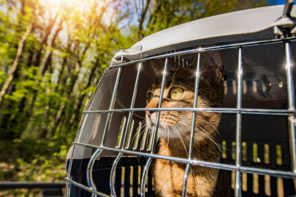When you take your cat into the outdoors — especially in wild or remote areas — you’re exposing your pet to risks he or she wouldn’t typically face. And sometimes that risk has no legs and smells the air with its tongue.
The Centers for Disease Control estimates that 7,000 to 8,000 people receive venomous snake bites each year, and only five of those people die. That number would be higher if people didn’t seek medical care, which is why it’s imperative that you see a doctor — and the same goes for your adventure cat.
A venomous snakebite can be deadly if it’s not treated immediately, and even a bite from a nonvenomous snake can pose health risks, so the ASPCA Animal Poison Control Center recommends that you always seek medical help.
In the United States, bites are most likely to occur between March and October when snakes are most active, but they could occur at any time so it’s important to remain vigilant when you and your cat are hiking, camping or exploring.
The best way to prevent snakebites is to avoid encountering snakes in the first place.
At home, take simple precautions like keeping your yard clean of excess brush and cleaning up food or birdseed that can attract rodents — and therefore snakes.
When out on a walk or hike, keep your cat on a leash and try to avoid long grass, shrubbery and rocks. And while your feline is surely curious, don’t let him dig under rocks or explore beneath logs.
Snakes will typically try to avoid you and bite only as a last resort, but cats may instinctively approach them or even pursue them. If you see a snake, steer clear of it and turn back the way you came.
Don’t even let your cat investigate dead snakes. Biting is a reflex that can be activated even hours after death — even in decapitated snakes.
“Snakes in general are well known for retaining reflexes after death,” Steven Beaupré, a biology professor at the University of Arkansas, told LiveScience.
Remember that snakes don’t have to coil before they strike, and they can strike across a distance equal to nearly half their body length.
It’s a good idea to familiarize yourself with the types of snakes in your area, especially venomous ones. If a bite occurs, being able to identify the snake can be beneficial to your cat’s treatment.
Snakebite symptoms in cats:
- Local or general swelling
- Bleeding
- Rapid pulse
- Intense pain
- Low blood pressure
- Dead tissue around the wound
- Diarrhea
- Shortness of breath
- Weakness
- Renal failure
- Coma
What to do if your cat is bitten
It’s important to stay calm and try to keep your cat calm too.
Remove the animal’s collar and harness, and try to limit his activity. If possible, keep the bitten body part below heart level.
Seek veterinary care for your pet immediately, and don’t waste time trying to catch or kill the snake.
Also, don’t attempt to suck out the venom, bleed the wound or apply ice or a tourniquet.
Can you train your cat to avoid snakes?
You can try, but keep in mind that cats have an innate hunting and chasing instinct.
If your cat has a weak prey drive, it’s possible to train him not to pursue these slithery creatures; however, training isn’t a replacement for caution and vigilance.
“You could clicker train some cats with very low prey drive to come to you when they saw a critter, if you are present,” said Kathy Diamond Davis, a VeterinaryPartner.com contributor. “You could reduce your cat’s inclination to hunt by raising the cat with no opportunities to hunt and rewarding the cat for leaving all critters alone. Cats are so highly instinctive that I think the only way to have an effect would be to keep all that prey drive dormant. It’s probably not possible with most cats.”
For more information on snake bites in pets, check out the infographic by Murdoch University below, but be aware that the data comes from Australia and may differ from your area.
Click the infographic to view it larger.
Before you take your cat outside, please familiarize yourself with these adventuring best practices.





